Publisher: Chessbase, 2015, Magazine + DVD
Highlights:
Biel: The traditional tournament in Biel came down to a battle between three players, Navara, Wojtaszek and Vachier-Lagrave. The Czech began with 3 out of 4, one of which was his own immortal game with a king march to h8. In the second flight of games Wojtaszek took the lead at first, but the best final sprint was that of Vachier-Lagrave. Both the French and the Polish players have each annotated a game for us. Other commentary has been provided by Ftacnik, Illingworth, Krasenkow, Marin, Mokal, Pavlovic, Roiz, Shah, Stohl, Szabo and Wagner. In addition you can also find on the DVD ten “Games of the day” by Daniel King, Rustam Kasimdzhanov and even Maxime Vachier-Lagrave himself.
Sinquefield-Cup: The second tournament in the “Grand Chess Tour” was even stronger. Once again Magnus Carlsen had a miserable start, with Veselin Topalov again being the spoilsport. The latter’s early lead did not last. Levon Aronian had started with a magnificent win against Caruana and also continued to play strongly. Undefeated and with three victories he won the tournament with a lead of one point. On the DVD you will find annotations by Illingworth, Krasenkow, Marin, Mokal, Pavlovic, Roiz, Stohl, Szabo and Wagner. On top of that all nine daily roundups by Daniel King have been included in the report on the DVD.
Opening Surveys
Karolyi: Reti Opening A09
1.Nf3 d5 2.g3 Nc6 3.c4 d4
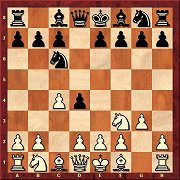
| | Here White is actually playing a sort of Schmid Benoni with reversed colours. The starting position often comes about via 2.c4 d4 3.g3 Nc6. As Tibor Karoly establishes in his article, however, the extra tempo does not bring White much: he has rather to be concerned about equality. |
Stohl: English Opening A22
1.c4 e5 2.g3 Nf6 3.Bg2 d5 4.cxd4 Nxd5 5.Nc3 Nb6

| | Igor Stohl investigates the new trend of not continuing from the diagram with 6.Nf3. Instead, there are two alternatives: 6.d3, so as then to delay the move Nf3 for as long as possible, or 6.e3 and then Nge2, with a later f4. |
Pavlovic: Symmetrical English A37
1.c4 c5 2.g3 g6 3.Bg2 Bg7 4.Nc3 Nc6 5.Nf3 e6 6.d4

| | As Milos Pavlovic explains, solid alternatives to 6.d4 would give White too little hope for an advantage. The temporary pawn sacrifice 6.d4, on the other hand, sometimes leads to really sharp positions. Black can probably equalise, but despite that many players totally avoid the variation. |
Marin: Owen Defence A40
1.d4 e6 2.c4 b6 3.e4 Bb7 4.Nc3 Bb4

| | For Mihail Marin the position in the diagram arises via 2...Bb4+ 3.Nc3 b6 4.e4 Bb7; but in the original Owen Defence, on the other hand, White would do better playing 4.Bd3!. Marin shows impressively that the lines after 4.Nc3 Bb4 are very playable for Black. |
Schipkov: Wade Defence A41
1.d4 d6 2.Nf3 Bg4 3.c4 Nd7
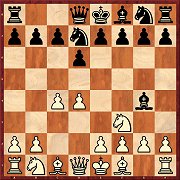
| | As his main move Boris Schipkov analyses 4.Nc3 and after it he sees an advantage for White in all variations. After, for example, 4...e5 5.g3 Ngf6 6.Bg2 c6 there is on the board an Old Indian type of position. With 7.h3 White gains possession of the bishop pair. |
Schandorff: Caro-Kann B12
1.e4 c6 2.d4 d5 3.e5 Bf5 4.Nf3 e6 5.Be2 Nd7 6.0-0 f6
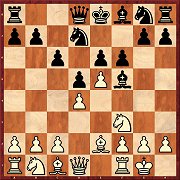
| | Actually ...f6 tends more to be linked to the French, but why should it not also be played in the Advance Variation of the Caro-Kann? According to Lars Schandorff it is above all about exerting pressure on White’s centre. In addition one gets away from the closed types of position. |
Krasenkow: Sicilian Defence B30
1.e4 c5 2.Nf3 Nc6 3.Bb5 e6 4.0-0 Nge7
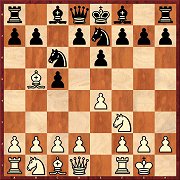
| | Michal Krasenkow presents his own repertoire (3...e6) against the Rossolimo Variation. The second part deals with all lines after 4.0-0 Nge7. The focus is on 5.c3, but you have to reckon with the immediate 5.d4 as well as other replies. |
Berg: French C15
1.e4 e6 2.d4 d5 3.Nc3 Bb4 4.Ne2 Nc6
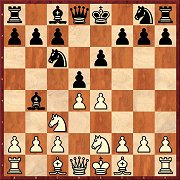
| | The Winawer with 4.Ne2 is one of the unpleasant side variations in which White usually has better knowledge of what he is doing. Emanuel Berg has played it with both sides, but it was only after a game against 4...Nc6 that he totally gave up the variation as White. |
Ris: Scotch C45
1.e4 e5 2.Nf3 Nc6 3.d4 cxd4 4.Nxd4 Bc5 5.Nxc6 bxc6
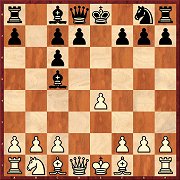
| | At a high level the capture on c6 is usually met with 5...Qf6, but for some time the natural 5...bxc6 has been seen more and more frequently. Robert Ris shows in his article that Black gets quite decent positions after the usually played moves 6.Bd3 Qh4. |
Illingworth: Ruy Lopez C65
1.e4 e5 2.Nf3 Nc6 3.Bb5 Nf6 4.d3 d6
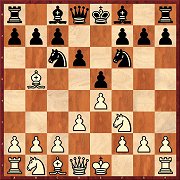
| | In the games of top players 4...Bc5 predominates, but according to Max Illingworth one can rather play for a win with 4...d6. However, the risk factor also grows greater and our author shows a precise move order for White with which an advantage can be obtained. |
Havasi: Queen’s Gambit D06
1.d4 d5 2.Nf3 Bf5 3.c4 e6 4.Nc3 Nf6
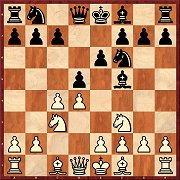
| | Up till now 4...c6 was always played, though without Black managing to equalise. As Gergö Havasi shows, 4...Nf6 is a much more precise move order. There are transpositions to the London System with reversed colours, and one can also reach the Exchange Variation of the Queen’s Gambit. |
Postny: Queen’s Gambit D38
1.d4 d5 2.c4 e6 3.Nf3 Nf6 4.Nc3 Bb4 5.cxd5 exd5 6.Bg5 h6 7.Bh4 Nbd7
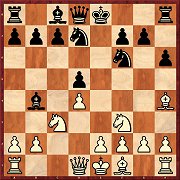
| | As Evgeny Postny demonstrates in his article, in this variation of the Ragosin Defence Black must first do without the lever ...c5 and become active with ...g5 and then ...Ne4. Those who want to take this variation into their repertoire really need to know what they are doing. |
Szabo: King’s Indian E68
1.d4 Nf6 2.c4 g6 3.g3 Bg7 4.Bg2 0-0 5.Nc3 d6 6.Nf3 Nbd7 7.0-0 e5 8.e4 exd4 9.Nxd4 Re8 10.h3 a6 11.Be3 Rb8 12.b3
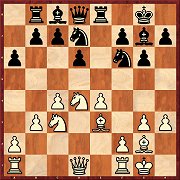
| | This precise setup for White has, according to Krisztian Szabo, the advantage that the typical 12...c5 13.Nde2 b5 is dubious here. But the Hungarian author also shows that the alternative 12...Ne5 is quite playable for Black. |
Kuzmin: King’s Indian E97
1.d4 Nf6 2.c4 g6 3.Nc3 Bg7 4.e4 d6 5.Be2 0-0 6.Nf3 e5 7.0-0 Nc6 8.d5 Ne7 9.Qc2
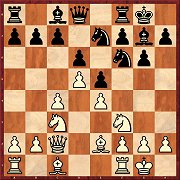
| | Here White usually follows up with 10.Rd1, then he is really well prepared for ...f5 Ng5. According to Alexey Kuzmin Black should also as a rule play ...h6 before he advances the f-pawn. There is not yet a lot of material with 9.Qc2, so the move is well suited for use as a surprise weapon. |